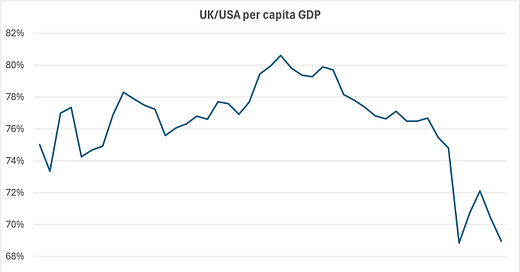Britain’s public finances are a disaster waiting to happen. The national debt (public sector net debt excluding public sector banks) is very close to 100% of GDP (99.4%) and set to rise, compared with lows of just over 20% in the 1990s. The debt level is not exceptionally high by international standards, to be sure. But, in the words of a recent House of Lords committee report, “the servicing of UK debt has become more vulnerable to inflation and interest rates, along with changes in investor sentiment … This increased vulnerability results from successive rounds of quantitative easing (QE), and a greater proportion of debt being index-linked [25%] and held by overseas investors [29%].” With interest rates higher and growth lower since the post-Covid inflation shock, the UK is very close to a classic debt trap. Since 2021, debt service costs have jumped above 10% of revenues and 4% of GDP, their highest levels since World War II. The rising cost of debt service is also certain to crowd out other government functions, such as a defense.
Keep reading with a 7-day free trial
Subscribe to Niall Ferguson's Time Machine to keep reading this post and get 7 days of free access to the full post archives.




